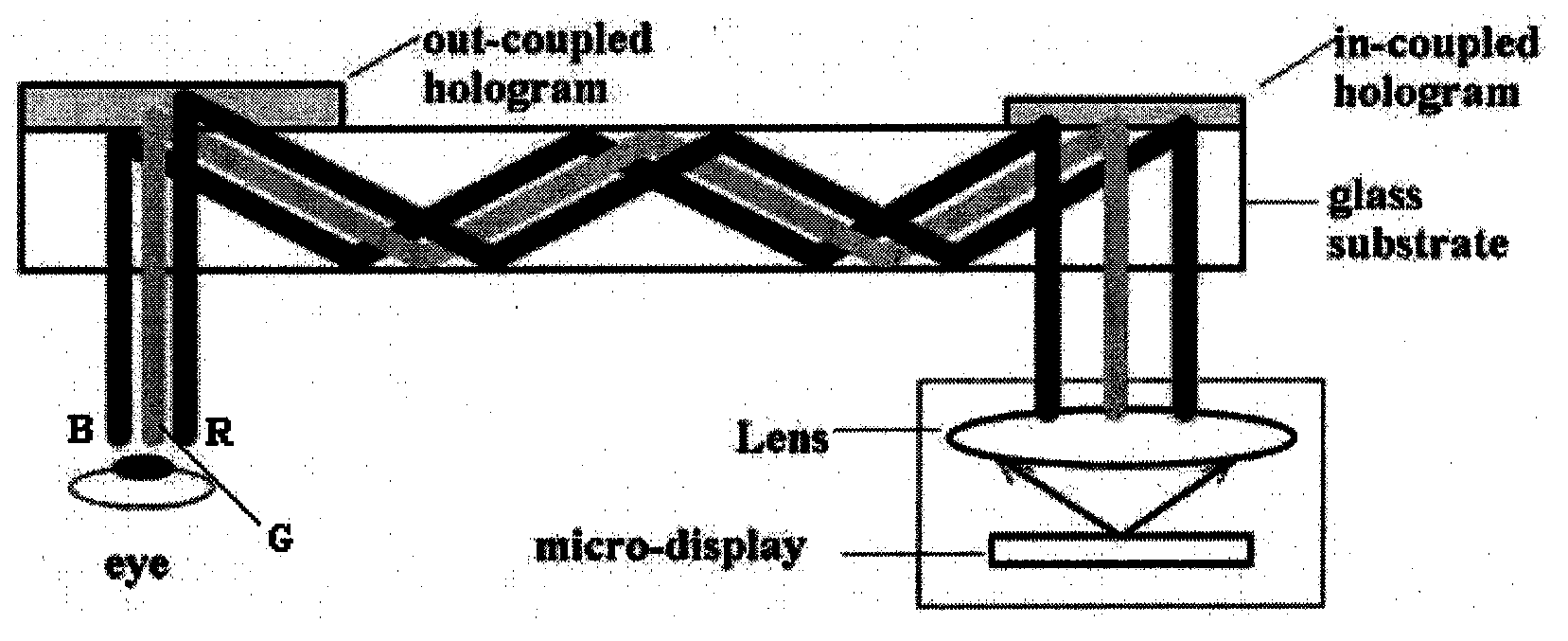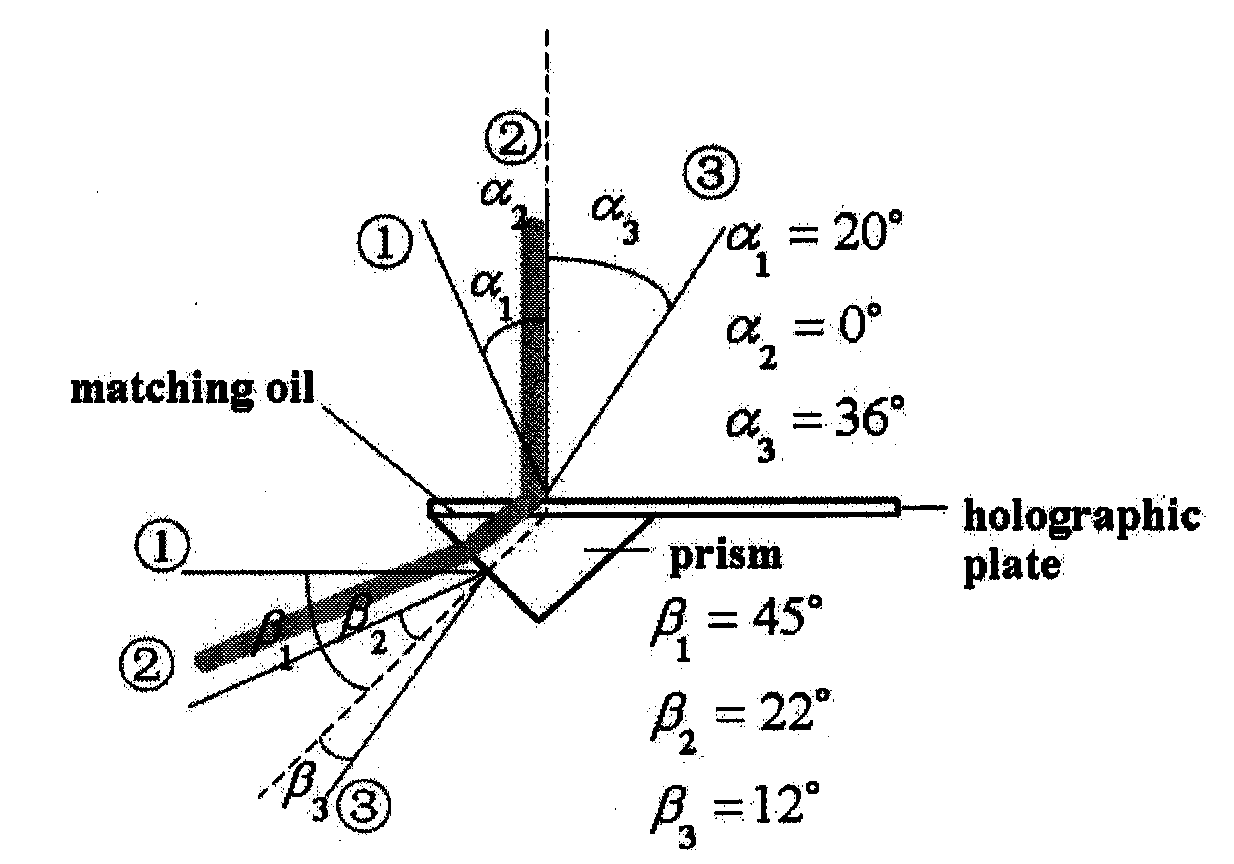Achromatic method based on three-time exposure technology
An achromatic, sub-exposure technology, applied in the field of multi-spectral imaging, can solve the problems of high cost, time-consuming, and extremely high manufacturing process requirements
- Summary
- Abstract
- Description
- Claims
- Application Information
AI Technical Summary
Problems solved by technology
Method used
Image
Examples
Embodiment
[0041] The achromatic method based on the triple exposure technology disclosed in this embodiment,
[0042] The principle of achromatic aberration is as figure 1 As shown, the colored light emitted from the microdisplay passes through the collimating lens and then irradiates the coupling input grating. Through the modulation of the grating, the RGB three-color light waves are reflected in the same direction and enter the optical waveguide. At the coupling output grating, the light wave is modulated and reflected, and enters the human eye, so that the human eye can see a color image. The key issue is how to make the coupling input and output grating to achieve the desired effect. When two beams of plane waves are used to make a holographic grating by interference, the period of the grating, the angle between the two beams and the wavelength satisfy the formula
[0043] 2 Λ sin θ rec 2 ...
PUM
 Login to View More
Login to View More Abstract
Description
Claims
Application Information
 Login to View More
Login to View More - R&D
- Intellectual Property
- Life Sciences
- Materials
- Tech Scout
- Unparalleled Data Quality
- Higher Quality Content
- 60% Fewer Hallucinations
Browse by: Latest US Patents, China's latest patents, Technical Efficacy Thesaurus, Application Domain, Technology Topic, Popular Technical Reports.
© 2025 PatSnap. All rights reserved.Legal|Privacy policy|Modern Slavery Act Transparency Statement|Sitemap|About US| Contact US: help@patsnap.com



